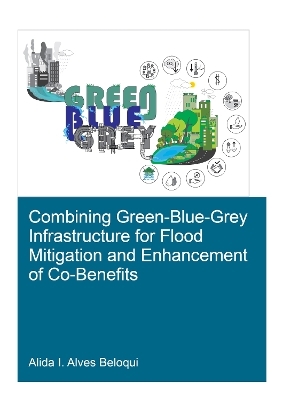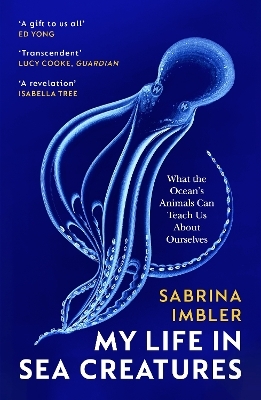
Combining Green-Blue-Grey Infrastructure for Flood Mitigation and Enhancement of Co-Benfits
Seiten
2020
CRC Press (Verlag)
978-0-367-48597-9 (ISBN)
CRC Press (Verlag)
978-0-367-48597-9 (ISBN)
The objective of this research is to help decision-makers to adopt adaptation strategies to cope with flood risk while achieving other benefits. It provides tools and knowledge to facilitate holistic decision-making, in order to ensure safe and liveable urban spaces for current and future conditions.
An increment of urban flood risk in many areas around the globe is expected, accentuated due to climate change and urbanisation. Thus, appropriate flood risk management is crucial. Conventional approaches focus on grey infrastructure, which frequently do not address the root causes of risk. A change of paradigm is needed to develop effective adaptation strategies. Green-blue infrastructure (GBI) is a central concept to achieve adaptation to climate change. Its main strength is the ability to deliver multiple benefits. Although strong evidence exists demonstrating that GBI is a sustainable solution to reduce flooding, its adoption is still slow. Therefore, the objective of this research is to help decision-makers to adopt adaptation strategies to cope with flood risk while achieving other benefits. This study provides a framework which introduces co-benefits into decision-making for stormwater infrastructure planning. Besides, the multiple benefits are quantified and their impact on helping GBI implementation are evaluated. Finally, the effects of including co-benefits on the selection of flood mitigation strategies and the trade-offs among cost and benefits are assessed. This work contributes to enhance planning processes for flood mitigation combining green-blue-grey measures. It provides tools and knowledge to facilitate holistic decision-making, in order to ensure safe and liveable urban spaces for current and future conditions.
An increment of urban flood risk in many areas around the globe is expected, accentuated due to climate change and urbanisation. Thus, appropriate flood risk management is crucial. Conventional approaches focus on grey infrastructure, which frequently do not address the root causes of risk. A change of paradigm is needed to develop effective adaptation strategies. Green-blue infrastructure (GBI) is a central concept to achieve adaptation to climate change. Its main strength is the ability to deliver multiple benefits. Although strong evidence exists demonstrating that GBI is a sustainable solution to reduce flooding, its adoption is still slow. Therefore, the objective of this research is to help decision-makers to adopt adaptation strategies to cope with flood risk while achieving other benefits. This study provides a framework which introduces co-benefits into decision-making for stormwater infrastructure planning. Besides, the multiple benefits are quantified and their impact on helping GBI implementation are evaluated. Finally, the effects of including co-benefits on the selection of flood mitigation strategies and the trade-offs among cost and benefits are assessed. This work contributes to enhance planning processes for flood mitigation combining green-blue-grey measures. It provides tools and knowledge to facilitate holistic decision-making, in order to ensure safe and liveable urban spaces for current and future conditions.
Alida holds a Civil Engineering degree, she has specialisation in water management with focus on nature-based solutions for flood mitigation in urban spaces. Her working background combines private and public experience. Her ambition is to continue developing her career in this field, improving knowledge and translating it into practice with the aim of achieving safer, liveable and climate-proof spaces for the future.
Introduction, Multi-criteria Approach for Selection of Green-blue and Grey Infrastructure, Considering Stakeholders Perceptions for Green-blue Infrastructure Selection, Assessing the Co-Benefits of green-blue-grey infrastructure, Exploring trade-offs among the multiple benefits of green-blue-grey infrastructure, Outlook.
| Erscheinungsdatum | 20.03.2020 |
|---|---|
| Reihe/Serie | IHE Delft PhD Thesis Series |
| Verlagsort | London |
| Sprache | englisch |
| Maße | 170 x 240 mm |
| Gewicht | 276 g |
| Themenwelt | Naturwissenschaften ► Geowissenschaften ► Hydrologie / Ozeanografie |
| Technik ► Umwelttechnik / Biotechnologie | |
| ISBN-10 | 0-367-48597-4 / 0367485974 |
| ISBN-13 | 978-0-367-48597-9 / 9780367485979 |
| Zustand | Neuware |
| Informationen gemäß Produktsicherheitsverordnung (GPSR) | |
| Haben Sie eine Frage zum Produkt? |
Mehr entdecken
aus dem Bereich
aus dem Bereich
die große Bild-Enzyklopädie mit mehr als 2000 Fotografien und …
Buch | Hardcover (2023)
Dorling Kindersley (Verlag)
CHF 79,90
Kuriositäten und Überraschendes im, am und auf dem Meer
Buch | Hardcover (2023)
Kosmos (Verlag)
CHF 49,90
what the ocean's animals can teach us about ourselfs
Buch | Softcover (2024)
Vintage (Verlag)
CHF 21,90


